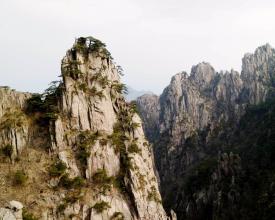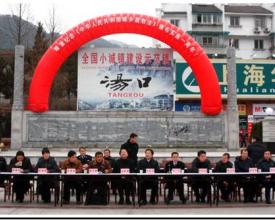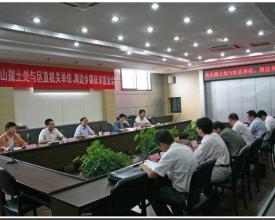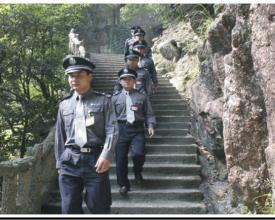Achieving equitable governance by developing a systematic plan
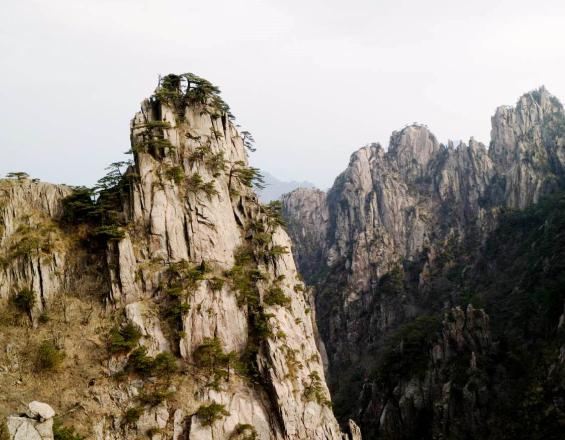
After decades of management, Huangshan has developed a plan system based on the Master Plan of Huangshan Scenic Area, the most important and basis plan with legal effect. The plan system is for every part of work and clear responsibilities and tasks for different departments, balancing protection and development. Multiple plans address different issues, including resource protection, finance and tourism, developed with expert input. Community cooperation is given top priority to ensure proper implementation. The legal status of the plan, concerted management with communities, and adequate government funding has ensured the full implementation of the plans.
Context
Challenges addressed
Location
Process
Summary of the process
Building Blocks
Developing aligned management plans at different levels
In line with the National Regulations on Scenic Areas as well as the Management Regulations for Huangshan Scenic Area, the Master Plan is reviewed and ratified by the State Council, the Detail Plan for Each Zone is by the Ministry of Urban and Rural Construction, the Sectional Plan and Designated Plan for Specific Challenges are approved by the Provincial Bureau of Construction or relevant provincial administration, so the whole systematic plan has solid legal status.
Enabling factors
1.Strict supervision and follow-up monitoring system has guaranteed the effective implementation. 2.Unified management: In the past years of practice, the Committee has shaped a suitable mechanism to execute the plans. 3.Adequate funding: over 60 mio. yuan each year is designated in heritage conservation, infrastructure improvement, support for neighborhood communities. In addition, Anhui Province dedicates a grant of 2 million yuan every year specifically for heritage conservation. Adequate funding is crucial for the implementation of plan
Lesson learned
1. Systematic planning is extremely effective in solving challenges. In the process of planning, scientifically based studies will be conducted to find out the factors that may pose threats to the conservation. In holding workshops at different levels, all stakeholders are involved in contributing possible solutions. These discussions will lead to a holistic solution and unified action plans. 2. A plan shall be both visionary and practical. A plan is believed to be visionary. It predicts what will happen in the future. So, it takes in the best practice and advanced concepts to ensure its foresight and futurity. However, it has to be practical so that it can be operational to solve the specific challenges that face each entity. 3. A sound and unified planning system can guarantee effective implementation. No single plan can solve all the problems. Different plans are tailored to different targets. They may differ in their specific goals, but all of them shall be complementary to each other in the umbrella Master Plan.
Developing positive relationships with neighboring communities
Enabling factors
Lesson learned
Implementation of plan
According to the Master Plan, we have done research on strategy and mechanism for the implementation and developed 60 implementation plans. We have detailed our tasks and targets, made schedule to reach them, then divided those tasks to responsible departments.
Enabling factors
1.Legal status 2.Promotion: After we finish the plans and implementation strategy, these documents will be sent to every departments. And we post it on our website and info column. We would also Ccarry out activities like special lecture on our plans for staffs, put banners on our community square. 3.Adequate funding
Lesson learned
1.Strict plan and management is the most important. Management is the key for plan implementation. Bad management will discount the targets or lead to a wrong way. Good implementation will never succeed without powerful management mechanism, well developed management system and strict monitoring and accountability system. 2.Good relationship with surrounding areas is the basement for plan implementation. With the support from surrounding areas, coordinate work will be much easier.
Impacts
1.Resource protection: according to investigation and monitoring, the forest coverage rate of Huangshan has increased from 56% in the 1970s to 98% now. The instantaneous value of negative oxygen ion concentration in air has the highest peak value of 267000 per cm3. There are 1805 species of advanced plants and 323 species of vertebrates, and the species population size is stable. The 1019 units of physical landscape resources listed in our protection objectives have been well protected. Based on 2009, the total electricity and water consumption within our scenic area is reduced by 20%.
2. Tourism development. In the decade before the Covid-pandemic (2010-2019), the average annual growth rate of tourists was 3.73%, and the average growth rate of tourism revenue was 7.27%.
3. Community development. There are 1225 small and medium-sized enterprises in our community. Our management committee has maintained close relations with nearly 200 travel agencies and more than 300 other affiliates (transportation, hotel, shopping malls and interpretation companies), making them realize that jointly protecting Huangshan is to protect their common interests.
